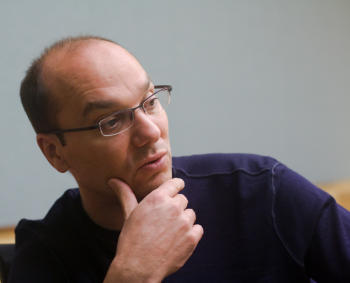Android Co-founder: Android Originally Meant for Cameras
Android has now come full circle thanks to the Samsung Galaxy Camera.
Here's an interesting tidbit about Android: it was originally designed as a camera OS. Android co-founder Andy Rubin revealed this bit of history during the Japan New Economy Summit held Tuesday in Tokyo, saying that the team envisioned "smart cameras" that connected to a wired or wireless PC. In turn, this PC would link to an "Android Datacenter" that allowed users to store photos in the cloud.
The Android team made its initial pitch to investors in April 2004, but Google swooped in and purchased Android Inc. in 2005. The team, now staffed with members with experience at companies like Orange and T-Mobile, thus reworked the OS for mobile handsets when the smartphone market began to explode. The software core remained the same, including its Java core.
"We decided digital cameras wasn't actually a big enough market," said Rubin. "I was worried about Microsoft and I was worried about Symbian. I wasn't worried about iPhone yet."
Because Google makes revenue from ads, the goal with Android was – and still is -- growth, not per-unit income. But it's also a platform for selling other services and products. Thus, to saturate the market and undercut the competition, Google provides the operating system for free while other vendors like Microsoft charge device makers a licensing fee to use their software.
"We wanted as many cellphones to use Android as possible. So instead of charging $99, or $59, or $69, to Android, we gave it away for free, because we knew the industry was price sensitive," he said.
Rubin added that the original "ambitious" projection by Google aimed for a 9-percent smartphone market share in North America and Europe by 2010. But the Android saturation actually grew to 72-percent as of 2012, and by March 2013, over 750 million devices have been activated on a global scale.
But Android has come full circle. Samsung is using the OS in its Samsung Galaxy Camera which connects to a Wi-Fi network or a 3G/4G LTE network, depending on the model. It's almost like an Android phone with a super-huge camera lens on the back, packed with a 4.8-inch Super Clear LCD capacitive touchscreen, 1 GB of RAM, 4 GB of internal storage, a quad-core Exynos 4412 SoC clocked at 1.4 GHz, and a 16.3MP autofocus lens.
Get Tom's Hardware's best news and in-depth reviews, straight to your inbox.
But the Android saturation doesn't stop there: it's also used in espresso makers, HDTVs, refrigerators, and tablets. Also likely running a version of Android is Google Glass which coincidentally sports a 5MP camera and Internet connectivity.

Kevin Parrish has over a decade of experience as a writer, editor, and product tester. His work focused on computer hardware, networking equipment, smartphones, tablets, gaming consoles, and other internet-connected devices. His work has appeared in Tom's Hardware, Tom's Guide, Maximum PC, Digital Trends, Android Authority, How-To Geek, Lifewire, and others.
-
jhansonxi Reminds me of KOMPLEX, the computer system that was in command of the toads in Bucky O'Hare and the Toad Wars. It was originally a traffic computer before it started taking over the galaxy and turn every planet into a swamp. I'm not sure if that makes a better analogy to Android or iPhone. :)Reply -
sundragon It shows that something that starts small, with little ambition, can change the world. Follow your dreams!Reply
